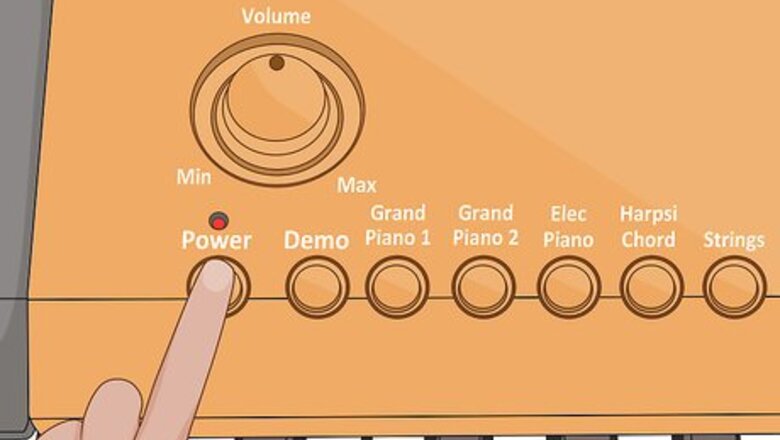
views
Using Your Casio
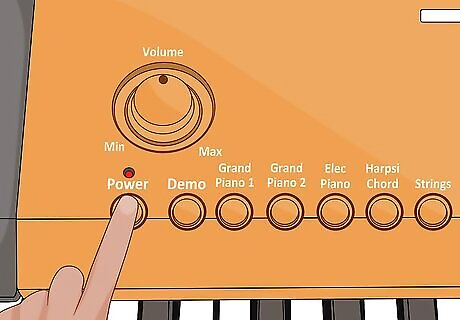
Turn it on and set the volume. The position of the power button will depend on your model. Usually you’ll find this button on the left or right side, in one of the corners of the keyboard. Volume knobs or buttons are usually labeled and are positioned off to the left or right as well. Many Casio keyboards have a small LED near the power button. When the keyboard is on, this light turns on to indicate it has power. If your keyboard isn’t turning on, check the power cord. The keyboard won’t turn on if it’s unplugged or the cord is loose. If your keyboard is battery powered and it won’t start up, you may need new batteries. Replace these and see if the keyboard turns on.
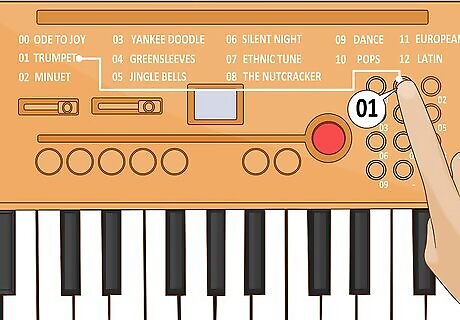
Choose the sound you want to play, if desired. The default for most keyboards when they’re first turned on is piano, but electronic keyboards can synthesize many different sounds. Use the number pad (usually to the right) to change the sounds made when you press a key. Most keyboards will have an instrument directory written somewhere near the keypad. This will list instrument names (like organ, trumpet, and so on) and their number. If your keyboard doesn’t have an instrument directory, look up the instrument numbers in your manual. If your manual is missing, Casio offers free electronic manuals online.
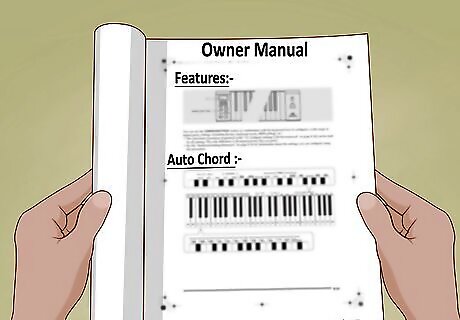
Consult your manual to learn keyboard features. The features your Casio has will largely depend on its model. Older keyboards may have few features, but newer ones may have programmed lessons, auto-chord features, a metronome, and more. Programmed lessons often make use of a keyboard light-up feature, where keys change color to indicate which you’re supposed to press to play a song. Auto-chord features will make simple chords off a single note. This can be a fun way to learn simple chord structure.
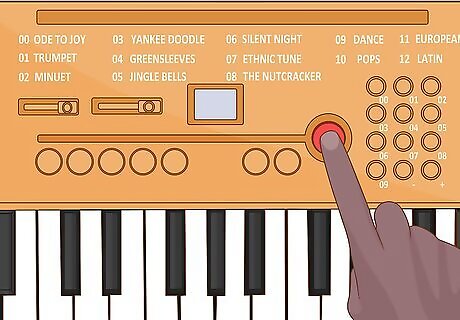
Record yourself to improve your playing. Especially in the beginning, you’ll be focused on hitting the right notes, hand position, and so on. You’ll be coordinating a lot of new motions, so it may be difficult to get a good sense of how it all sounds together without listening to a recording. The record button on most Casios is red and will be labeled with "Rec.” Generally, press this button once to start recording and again to stop. Recording features will vary from model to model. Your keyboard may even have memory so you can save songs you’re really proud of.
Acquiring Basic Keyboard Skills
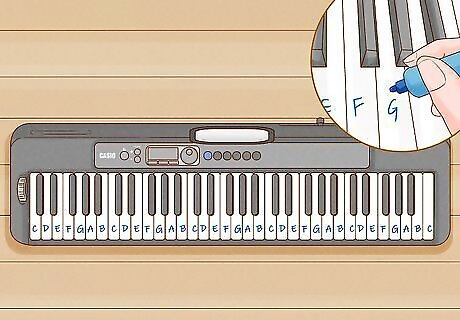
Familiarize yourself with the names of the keys. Keys are named after the musical notes they represent. Musical notes use letters from A to G. Each white key is called by a single letter name, with letters repeating every eight white keys. Moving up the keyboard, the next white note after G is A, but then the pattern continues normally (A, B, C, D, E, F, G, A, B…) and vice versa when moving down. One of the easiest notes on the keyboard to locate is C. Look for a grouping of two black keys (there will probably be several). The white key to the immediate left of these black keys is always C. The C at the center of the keyboard is called middle C. The C directly above is high C, and the C directly below low C. This pattern holds for other notes, too.
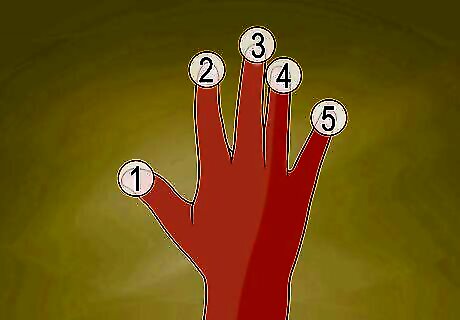
Recognize fingering notation. As a beginner, you might not know which finger to use to play a note. This is why fingering notation is included with many beginner songs. Numbers above notes correspond to the finger you should use to play, as follows: 1 represents your thumb. 2 represents your pointer finger. 3 represents your middle finger. 4 represents your ring finger. 5 represents your pinkie.
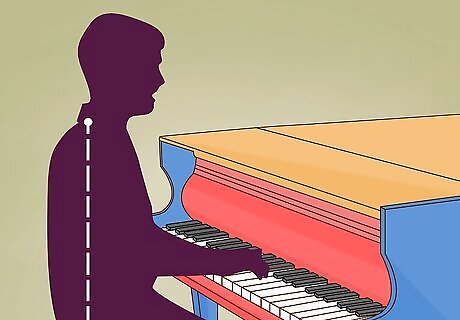
Sit at the keyboard with good posture. It’s no joke, the better your posture is, the better your playing will sound. Good posture allows you to use your full body when sitting at the keys, which will create a fuller, richer sound. Sit up straight and keep your shoulders relaxed. Keep your back and neck straight and in alignment. It may help you improve slouching if you set up a mirror to the side of your keyboard. You should be sitting high enough that your elbow and upper arm hang freely from your shoulder with your forearm parallel to the floor. Adjust your distance from the keyboard so that your elbows are a little in front of the center line of your body when playing.
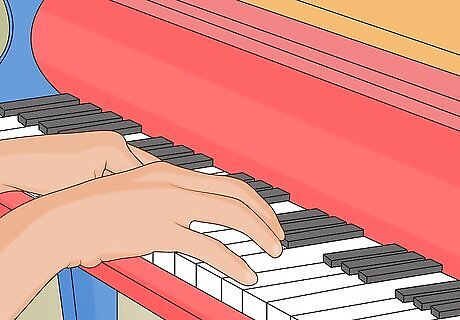
Keep your hands relaxed and press the keys smoothly. When resting fingers on the keys, hold your wrists so they are level with your hands and relaxed. Your fingers should be slightly curled. Press keys with a soft, fluid motion, similar to how a cat kneads. Some keyboards may not change volume when keys are pressed soft or hard. This feature is generally referred to as “key action” or “weighted keys.” Even if your keyboard doesn’t have action, you should practice proper key attack anyways. This way, when you sit down at a keyboard with weighted keys, you’ll still sound great.
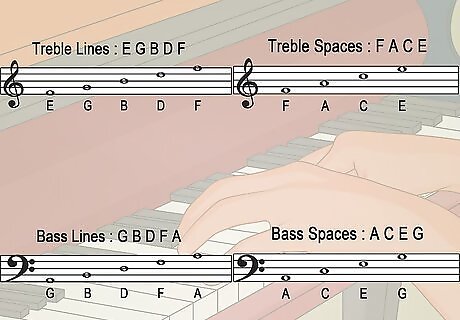
Read musical notes in piano sheet music. Keyboard music is generally represented with two sets of five lines. The top set represents notes played by your right hand and the bottom your left. Each line and space for each of these sets represents a note. In most beginner music, the leftmost area of the top set of lines will have a symbol that looks like an “&” sign. This is called a treble clef. Similarly, the bottom is usually marked with a backwards “C” and called the bass clef. Treble clef lines, from bottom to top, are E, G, B, D, and F. Starting again from the bottom, spaces represent the notes F, A, C, and E. Bass clef lines are G, B, D, F, and A, starting from the bottommost line. Moving up from the bottom space, the notes are: A, C, E, and G.
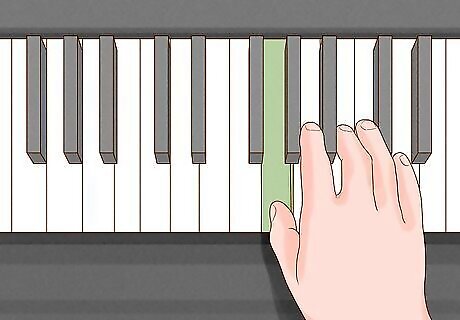
Play an octave scale with your right hand. It’s time to put all these basic skills together and play something. An octave is a span of eight notes on the keyboard, and you’re going to scale up this distance on the keyboard. Middle C is a good central note to start your scale: Spread your fingers so each is on a single key, with your thumb on middle C. Press the keys smoothly. When you release one key, follow with the next white key up. When you reach the third note up (E), tuck your thumb under to play the next white key (F). Scale up, pressing notes until you reach your pinkie (high C). Move down from high C. At your thumb (F), cross your middle finger over to the next key (E). Finish the scale at middle C.
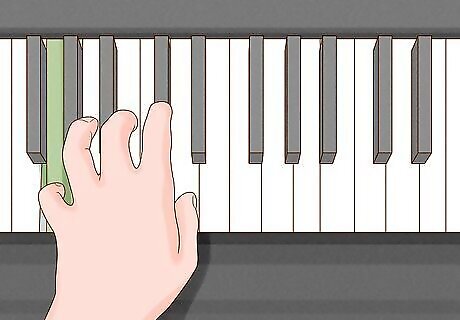
Follow up your right-hand scale with one using your left. For this scale, you’re going to start a little lower on the keyboard. Find the C right below middle C (low C). Remember you can find C notes easily on a keyboard by looking for groupings of two black keys. To scale with your left hand: Arrange your fingers one finger per key, with your pinkie starting on low C. Scale up, pressing keys one at a time until your reach your thumb (G). Cross your middle finger over your thumb to play the next white note (A). Stop scaling up at your thumb (middle C), then move down one white note at a time. At your third finger (A), tuck your thumb under to play the next white key (G). Scale down until you end at your pinkie (low C).
Playing “Twinkle Twinkle Little Star”
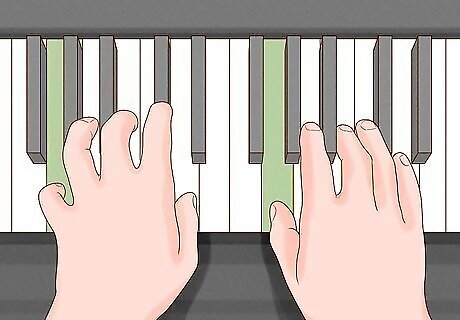
Position your hands on low and middle C. Your left hand will start with its pinkie on low C and your right with its thumb on middle C. The fingers of both hands should each be on a single white key apiece. Your left will occupy low C, D, E, F, and G; your right middle C, D, E, F, and G. Coordinating the motions of two different hands, even when those motions are similar like in this song, can be difficult. Sing along to help your rhythm. It may be too difficult at first to play both hands together. Even talented pianists practice difficult music by playing hands separately, when necessary.
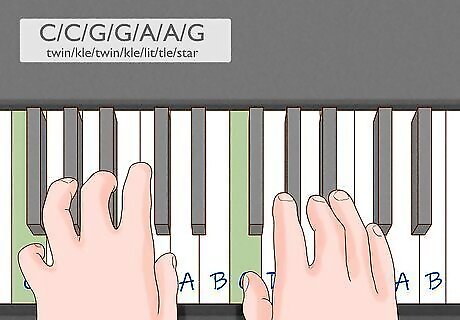
Play the first phrase. Each syllable of this song will get a single note in each hand. In the following, a forward slash ( / ) represents syllable breaks. So the first phrase is broken up: twin / kle / twin / kle / lit / tle / star. The notes in both hands are: C / C / G / G / A / A / G Right hand fingering: 1 / 1 / 5 / 5 / 5 / 5 / 5 (you’ll have to stretch your pinkie to A) Left hand fingering: 5 / 5 / 1 / 1 / 1 / 1 / 1 (you’ll have to stretch your thumb to A)
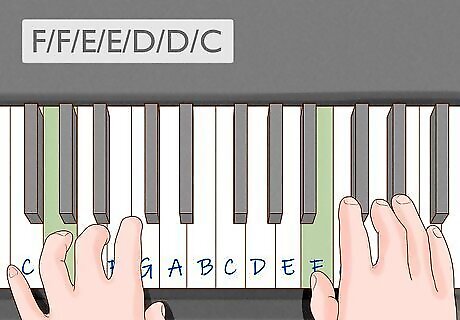
Follow with the second phrase. This phrase breaks down as: How / I / Won / der / what / you / are. The notes in both hands are: F / F / E / E / D / D / C Right hand fingering: 4 / 4 / 3 / 3 / 2 / 2 / 1 Left hand fingering: 2 / 2 / 3 / 3 / 4 / 4 / 5
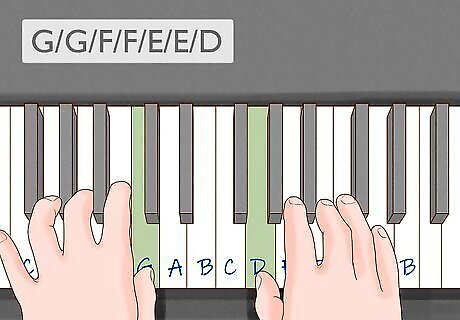
Play the last phrase. You’re almost there! Good work so far. The last phrase is divided: up / a / bove / the / world / so / high. The notes in both hands are: G / G / F / F / E / E / D. Right hand fingering: 5 / 5 / 4 / 4 / 3 / 3 / 2 Left hand fingering: 1 / 1 / 2 / 2 / 3 / 3 / 4
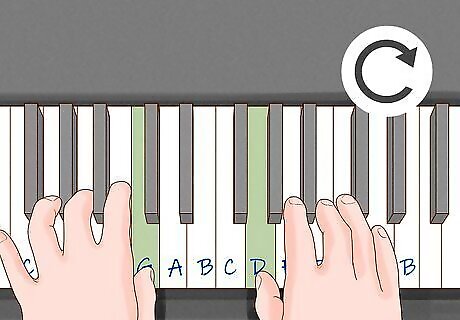
Repeat the last phrase. Although the words are different, this phrase is played exactly like the previous one. The breaks for the words in this phrase are: like / a / dia / mond / in / the / sky.
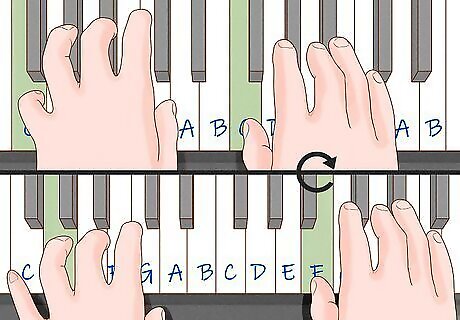
Finish with the first phrase followed by the second. Since this song opens and closes with the same two lines, these will be the same notes and fingering. Practice this song until you can play it perfectly.




















Comments
0 comment